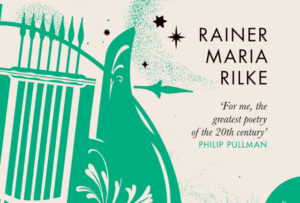Steven Lovatt on ‘The Loaf’ by Paul Muldoon
The Loaf
When I put my finger to the hole they’ve cut for a dimmer switch
in a wall of plaster stiffened with horsehair
it seems I’ve scratched a two-hundred-year-old itch
with a pink and a pink and a pinkie-pick.
Read ‘The Loaf’ on The Poetry Foundation.
‘The Loaf’ is a poem by Paul Muldoon, published in 2002 in the collection Moy Sand and Gravel. Like snakes and stepmothers, loaves come with so much inherited symbolism that they need to be established in the particular and historical if they’re not to become abstract and usable only in tendentious forms such as fable or parable: you get the symbolism gratis, but have to work for the rest. Muldoon’s loaf is both particular and historical, and the narrative work of the poem is in disclosing its context and meaning.
Across five economical tercets and their complementary refrains, we learn that the loaf in question is baked by an Irish immigrant labourer on the Raritan to Delaware Canal in New Jersey. These men, many of whom had fled famine in Ireland, worked for next to nothing, in wretched conditions, even before a cholera outbreak in 1832 killed them in their thousands. In light of this, the meagre loaf made with grain washed out of horse dung, while tangible and concrete, is nonetheless a synecdoche of personal desperation and social and racial injustice, and the poem a commemoration.
The meagre loaf made with grain washed out of horse dung, while tangible and concrete, is nonetheless a synecdoche of personal desperation and social and racial injustice, and the poem a commemoration
The disclosure of the loaf is a disclosure to conscience, worked through the five physical senses plus the sympathetic imagination. In the present tense of the poem, Muldoon is examining a hole cut into the wall of an old house, where a dimmer switch is to be fitted. He touches, listens to, smells, sees and tastes the aperture “in a wall of plaster stiffened with horsehair”. The first act of touch stirs his awareness that the mundane hole of the present is also a peep-hole into history, and the subsequent acts of sensing bring with them imagery from the fatal work on the canal. Although the poem appears emotionally and politically restrained, the phrase “turning up the gain” contains a bitter double meaning. ‘Gain’ can mean both pasture and fodder, which the men were of course literally turning up with their tools; and ‘to gain’ formerly meant to forage for food. Here, of course, the labourers, while performing the actions of people planting and harvesting the land, were in fact starving, and the only gain ‘turned up’ (i.e. increased) was the profit of the canal owners.
‘The Loaf’ is highly dynamic, alive with all kinds of cryptic movement that works in harmonious tension with the more obvious elements of repetition. In the narrative present the first stanza serves as an introduction, while the slower, less fluid meter of the final stanza suggests some kind of resolution, an impression heightened semantically by the sense of a goal attained and symbolically by the inescapably redemptive-feeling partaking of the bread. This qualified redemption is further suggested by the final full transformation of the first three stanzas’ ‘hole’ to the homophone ‘whole’. Where the ‘hole’ used to be there is now instead a ‘niche’ – a pleasing half-rhyme with the first stanza’s ‘switch’ and as such an element of circularity in an overall rhyme scheme that otherwise advances in a driving rhythm of rhyme-bolstered iambs. This forward progression of the rhyme scheme (excluding the fixed rhymes of the refrains) is in close step with the narrative progression: ABA, BCB, CCC, CDC, DAD.
‘The Loaf’ is highly dynamic, alive with all kinds of cryptic movement that works in harmonious tension with the more obvious elements of repetition
Given the witness-bearing intent of the poem, the nursery rhyme refrains that follow each stanza may initially seem out of place, but you need only omit them to realise what vital leaven they are, and what depth and gravity they add, for all the apparent whimsy of their childlike diminutives and bouncing anapaests. They stabilise through repetition the variable patterning of the stanzas and act as semantic and aural reinforcement to what precedes and follows them, while also providing, as a child might, a commentary on the action that’s both free of conventional restraint and at the same time preternaturally knowing. Thus ‘pink’, in its sense as a verb meaning to pierce, reinforces the action of making the hole in the wall and the trench for the canal, while as an echoic noun it prefigures the sound of the labourers’ tools; the ‘stink’ refers shockingly to both the flood-plain and the corpses of the labourers; ‘link’ might be an obvious reference to Muldoon’s achievement of connecting with his countrymen via the tasting of the bread, but a link is also a light borne at a funeral cortege – think of the linnet in ‘Who Killed Cock Robin?’ – and in this sense the word resounds richly off both the dimmer switch and the ‘winkie wick’ immediately above, suggesting as it does so an overall procession from darkness / forgetting, to light / awareness and remembrance.
‘The Loaf’ seems to me a poem of extraordinary composure and empathy, and an exemplary reminder that not loaves only, but every object and word we use, has a human history and a latent ethical weight that it should be our more frequent habit to sound.

